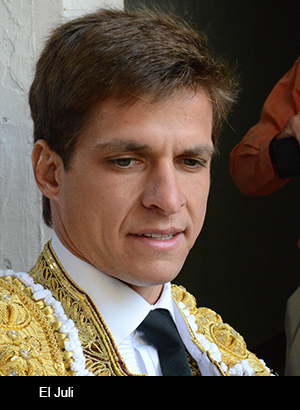
Imagine what a surprise it was when my wife, Julie said that she wanted to go to Tijuana, Mexico. For months, she has been concerned about my monthly trips across the border (mostly Ciudad Juárez) but I have long wanted her to see what border life is like, especially in the safer environment of Tijuana.
The occasion was the visit of Julián López Escobar, “El Juli,” the world’s greatest bullfighter in my opinion and a very unique human being. Born in Madrid, Spain on October 3, 1982, his parents enrolled him in the Madrid School of Tauromachy when he was only nine years old. When he turned fifteen, he moved to Mexico because you can begin fighting there at a younger age than in Spain. In September 1998, he received his “alternative,” the ceremony in which a “novillero” or beginner becomes a full-fledged matador in Nimes, France. He chose France because it, like Mexico, allowed him to do this at a younger age than in Spain. Then, only 16, he became the youngest matador in the history of the art. He has been one of the top ranked bullfighters ever since and we have seen him a number of times, including in Barcelona when he was seventeen.
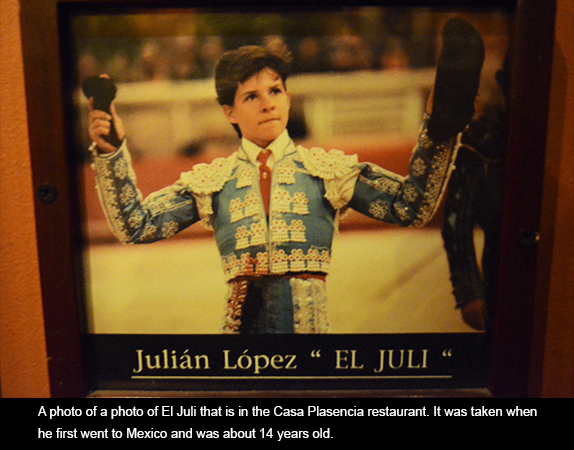
But El Juli is much more than just a superstar. He is a great student of his art, like a Peyton Manning in football. He is also dedicated to help others; for example, he has started a bullfighting school where young bullfighters can learn, especially those who have little money. In addition, he is very involved in charity work. I saw him in Olivenza, Spain near where he has a bull farm when he donated his fee to a local nursing home. So he is a person you have to admire as a human being as well as a bullfighter. When he eventually retires, I predict that he will find some other important role to play in Spain.
Our trip wasn’t easy. Because of the shooting at the Los Angeles airport (LAX) that Saturday, November 1, our flight from LA to San Diego was cancelled but we managed to find a rental car, work our way through the staggering amount of traffic south of LA and reach the border in darkness. Julie followed me nervously as we hauled our bags across the border and found a taxi to the excellent and very reasonable Hotel Palacio Azteca ($65.00 per night). Dinner with friends was at a superb restaurant, Casa Plasencia where the second floor is devoted to bullfighting and the walls are covered with fascinating photos.
Saturday, we were at the Plaza de Toros which is west of Tijuana by the sea. It’s a beautiful location run by new management that is trying to bring back interest in the bulls in Tijuana. Contracting with El Juli was a bold start because he is not only a superstar but very expensive. Perhaps as much as $200,000 a fight!
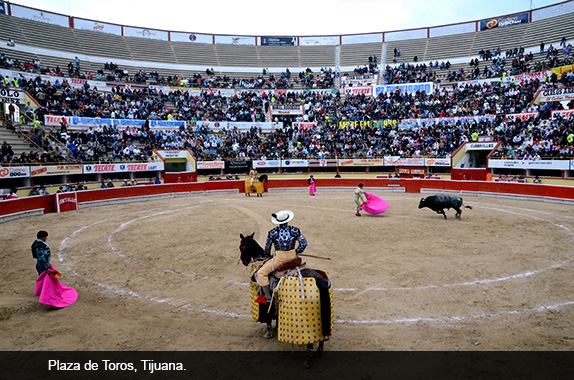
For me, one of the goals is always to get into the little tunnel that leads into the plaza and photograph the bullfighters before they parade into the plaza. Some plazas won’t allow this unless you have a special pass but here in Tijuana it is much more open. Almost too much so because when El Juli arrived, everyone crowded into this tunnel to get his autograph or be photographed with him.
The other matadors were Arturo Macias, a Mexican about the same age as El Juli and the youngest, Octavio García or “El Payo.”
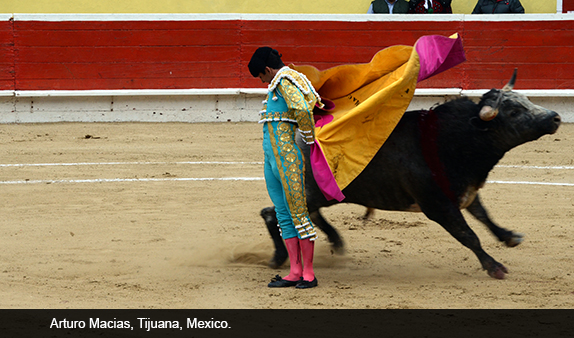
For El Juli, it was a triumphant afternoon in that he was awarded four ears. Macias, a showboat, also received four ears but his was a hometown decision. He’s a daring guy but with none of the skill and grace of El Juli.
For El Payo, it was an afternoon of bad luck that could have been much worse because his second bull threw him in the air and he was very lucky he wasn’t gored. El Juli consoled him and advised him but it just wasn’t his day.
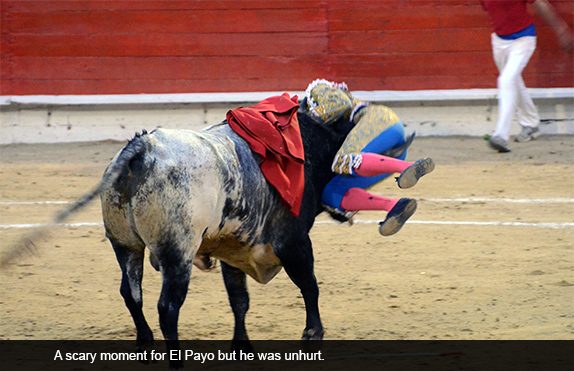
On Sunday morning, we left the hotel at 7 AM, found a couple of scruffy looking guys at the border who arrange van transportation, gave them $40 and got across in about a half hour. In the meantime, those many Mexicans who have to cross every day to go to jobs in the San Diego area and who can’t afford paying for a special van have to wait for hours. This is a scandal that costs the region billions of dollars in lost productivity. In our zeal to keep the wrong people out of the US, we’re imposing a huge penalty on the thousands of Mexicans who have permits to come into the country and who desperately need that income.
The man who drove this van considers that he has a decent job but when I calculated what he makes and how many hours a week he works, it came out to about $3 an hour. Living across the border may seem less expensive but that’s really not correct; living costs like utilities can be just as high as in the United States.
Tijuana is dramatically safer than it was a few years ago and it’s a very enjoyable place to visit. This border crossing situation has to be improved, however. Regions like Tijuana and San Diego have enormous economic potential and it’s scandalous that we can’t make life easier for the people who live and work there.



Responses to “Bullfighting and Border Crossing in Tijuana”